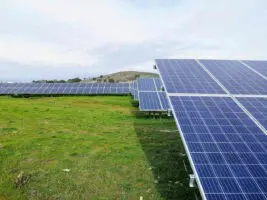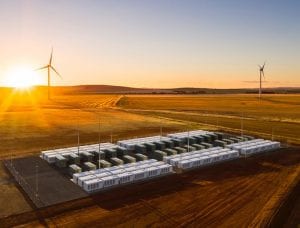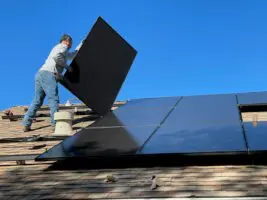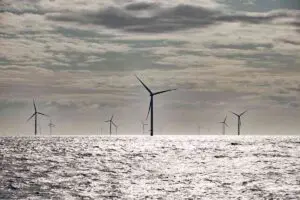We’ve all heard the talk about “range anxiety”, the apparently insurmountable fear by potential consumers that an electric vehicle won’t get them from Point A to Point B, and which is supposedly holding back the widespread uptake of EVs.
But what about range anxiety of another kind? Big Oil, it seems, can see the EV revolution on its radar, but still can’t figure out how far it is away, or what it should do about it. Denial is one popular option.
According to a new report by consultancy Deloitte, and presented to the oil and gas industry conference hosted by APPEA this week, nearly half of oil and gas companies are not preparing for the shift to EVs. They could be in for a shock.
“The underlying assumption of ever-increasing demand for crude oil due to an increasing appetite for transportation may soon stall,” Deloitte says in its report, “Enter the Volt-Age: Electric vehicle disruption of the oil and gas industry.”
“This is because of a new technology which offers superior qualities in all three dimensions of the energy trilemma – security of supply, affordability and environmental sustainability – the electric vehicle (EV).
“The EV is a game-changer in the evolution of both the energy and transport industries.”
The Deloitte report notes that the uptake of EVs could do wonders for Australia’s reliance on fuel imports, which as the federal government has finally admitted, is now perilously vulnerable to supply interruptions in the South China Sea.
This might be something that the federal government and the oil and gas industry might want to think about before it goes off drilling in places like the Great Australian Bight for new reserves.
Apart from the significant environmental issues, such reserves are likely to be costly. And the government’s proposed review of its fuel import problems made no mention of EVs, only suggesting it might contemplate EVs as a solution after an enquiry by RenewEconomy.
But at the AAPEA conference, Resources Minister Matt Canavan was still talking about finding oil locally, even though they are both expensive and hard to find.
One of the authors of the Deloitte report, Steve McGill, said EVs are an obvious alternative to oil imports, and he notes:
“All the countries that are looking to ban sales of cars with internal combustion engines are among the major oil importers,” McGill told RenewEconomy.
Perhaps that’s something that Australia should think about. Certainly the potential is there: The Australian Energy Market Operator has suggested half of all vehicles could be electric within 20 years.
McGill notes that the mining industry seems to be the most advanced when considering electric and automated vehicles, but the oil and gas sector was trailing badly. “Locally, everyone is focused on gas.”
Another consultancy, Accenture, agrees on the potential of EVs.
“Our reliance on fossil fuels makes Australia vulnerable to external price spikes and supply disruptions,” says Edgar Demuth who is a managing director within the Accenture resources business.
“Electric vehicles can help reduce this threat if the generation of electricity by renewable sources is extended.
“So the increase of electric vehicles needs to be accompanied by an increase in renewable energy generation to reduce the reliance on fossil fuels and the reliance on imports of fossil fuels to Australia.
“With a larger portion of renewable energy generated for transport purposes, electric vehicles can reduce the emissions that contribute to climate change and smog, improving public health and reducing ecological damage.”
In its report, Deloitte notes that the transportation sector is responsible for more than 55 per cent of the worldwide demand for petroleum products and demand for road transportation fuels accounts for 45 per cent of the global demand for oil.
But this graph below is interesting. It highlights how the big growth economies – particularly China and India – are looking to EVs for the future. In both countries, more than 85 per cent of consumers are showing an interest in EVs.

In many other countries, the interest is at 50 per cent or more. Those percentages will likely increase significantly as more lower-cost models become available, and the economics overwhelming trump internal combustion engine cars.
“It’s easy to see why EVs have not been high on oil executives’ radars,” the Deloitte report says.
“Representing less than two percent of global car sales today, EVs are barely visible on the road. This is set to change, and fast. Every major car manufacturer has outlined plans for electrification over the next decade.”
And just on that issue of range anxiety. Deloitte notes – as other have – that the average commuter trip for Australians is about 35kms. That equates to around 6.5kWh, according to their calculations, for the daily commute.
That is well within the range of models such as the Nissan Leaf and the new Tesla Model 3, not to mention the more luxury, and expensive vehicles with significantly bigger battery storage.
“While questions remain about remote EV deployments and long range distance requirements, the suitability of EVs for city fleet vehicles, buses, taxis and daily work and school commutes is clear,” the report says.
“Combined, personal vehicles and light duty commercial vehicles made up more than 90 per cent of the vehicle kilometres driven and over 75 per cent of fuel consumption in Australia in 2016.
“With the average Australian commute less than 35km/day return, a modern EV would be able to complete the commute using only 6.5kWh.
“For comparison, most second generation EVs, such as the 2019 Nissan Leaf, have a battery size of 60kWh, and the high-end Teslas exceeding 100kWh.
A Tesla Powerwall 2 home battery has 13.5 kWh in energy storage capacity. Put another way, each Tesla Model S has the equivalent of more than seven Powerwalls in the garage.”
The Deloitte report suggests that one of the problems holding back the oil and gas industry is the scale of the change that they must contemplate.
“Change will not come in the form of a one-for-one fuel switch from petrol to electricity, but rather through a fundamental re-imagining of the concept of transportation,” the report says.
“The challenges and opportunities of this major disruption are significant.
“With EV releases coming from every major car manufacturer, autonomous-EV trials underway throughout the world, and emissions and combustion engine ban legislation in the works in a number of cities and countries globally, the world sits on the cusp of a global transportation transformation that will impact all market segments and industries, including Australia’s LNG industry.”
And that is particularly the case given the interest in EVs from consumers in the Asia growth powerhouses.
“The EV opportunity is enormous – oil and gas operators must recognise this and should not ignore the rise of EVs,” the report’s authors say.
“They should use their massive competitive advantage in the form of large capital reserves, great technological prowess and their skills in managing large and risky capital projects and operations to get out in front of the unfolding energy and transport revolution.
“In today’s rapidly changing energy landscape, oil and gas companies must get into the driver’s seat if they want to be competitive in tomorrow’s energy economy.”
But will they? Part of the rhetoric of Big Oil about future transitions is that they don’t want to scare their investors, or more particularly the banks that would finance their projects.
It was interesting to note that in response to the survey’s question about impacts of the widespread adoption of EVs, only two per cent suggested stranded assets. Now, that is being hopeful.









